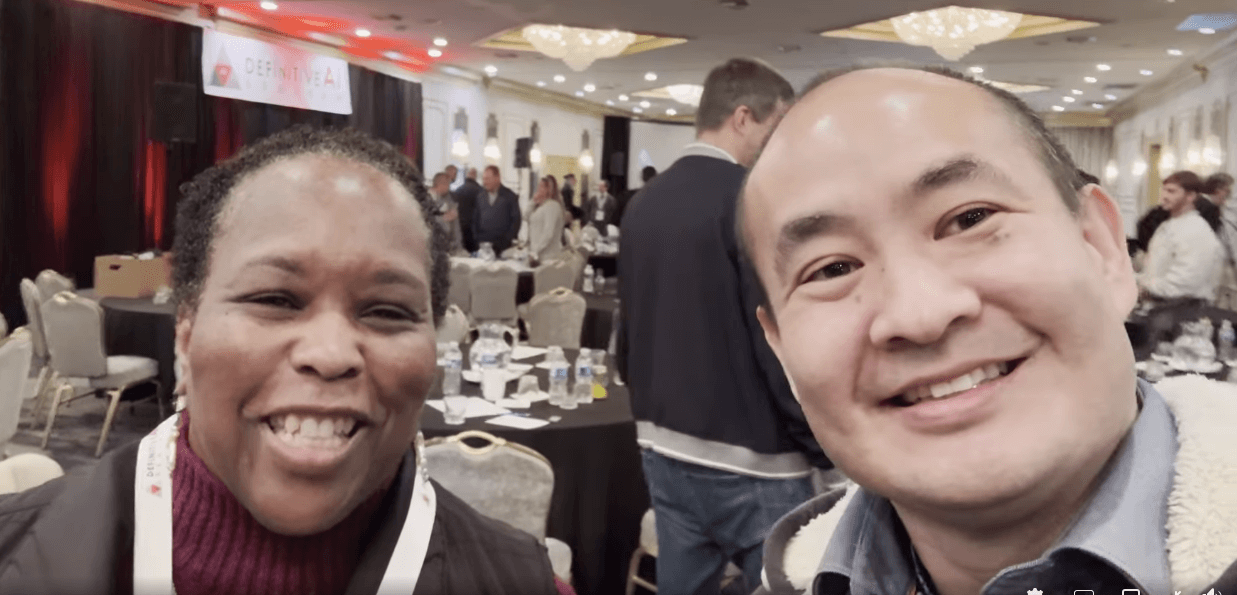
Felicia Gopaul is a Certified Financial Planner® who helps professional women build financial security and independence.
She has advised clients for decades, served on the CFP® Board, and produced over 150 podcast episodes to educate and support her community. Her track record speaks volumes, but her online presence hasn’t kept pace with her real-world impact.
We met through one of Perry Marshall’s programs. Felicia, a longtime follower of Perry since his early days in Google Ads, joined an AI-focused initiative that included an audit with me.
Immediately, I recognized that she had a goldmine of content, credentials, and stories—a foundation strong enough to lead in her field. She hadn’t yet translated that expertise into a clear, searchable digital presence.
In this article, I walk through how Felicia can bring her expertise to the forefront of the digital world using our Content Factory framework.
Why Felicia Is Already Winning Online (and What She Can Improve)
Felicia brings decades of experience and a foundation of real-world trust:
- A powerful mission, helping women take charge of their financial futures.
- Proven credentials: CFP® designation, media appearances, and board roles.
- Authentic relationships with clients, authors, and leaders like Mark Batson and Perry Marshall.
- Valuable content—webinars, interviews, YouTube videos, and dozens of media features.
But those assets are locked in what I call Phase 1 of the Content Factory: production.
She hasn’t processed, posted, or promoted her content in a way that builds momentum. Her assets sit scattered across YouTube, long-form videos, and podcast archives—largely unseen by those who would benefit most.
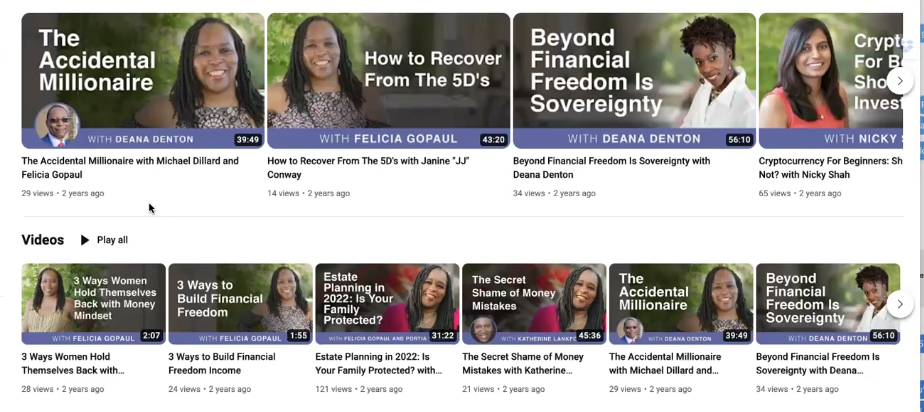
As Felicia put it, “I knew I had enough assets to do something with, I just didn’t know how to deploy them.”
For example, take my buddy Caleb Guilliams, CEO of BetterWealth. Caleb is a young financial advisor who’s crushing it—not just by creating content, but by leveraging relationships. He strategically interviews top people in the financial space, repurposes those long-form conversations into short-form clips, articles, and social posts, and boosts them with smart ad spend.
He shows up in search because his content earns trust and relevance. His co-created material, drawn from interviews with experts, helps position him in the center of high-value conversations.
As a result, he’s now earned a full Knowledge Panel on Google, reinforcing his authority and discoverability even more.
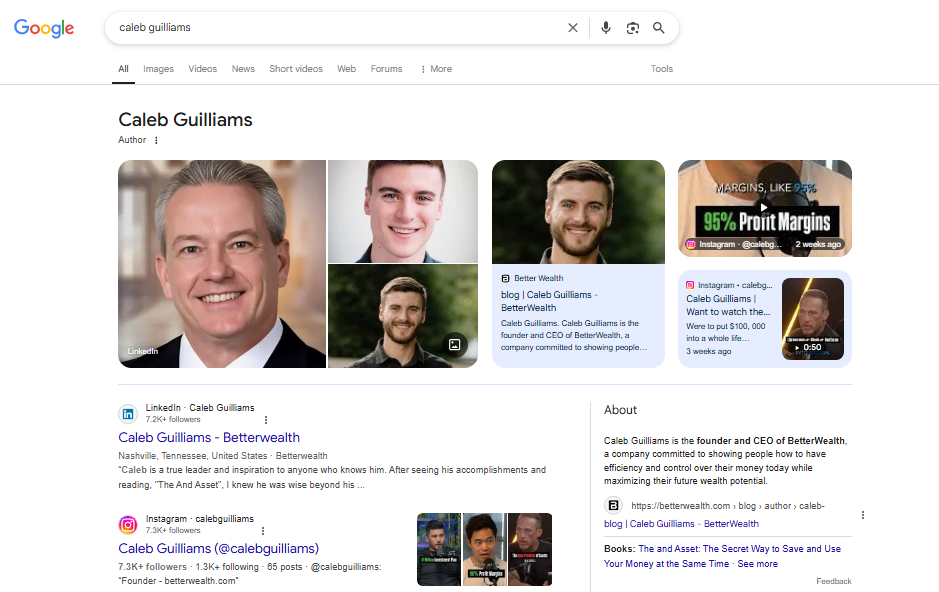
The Missed Opportunity (and Why That’s Good News)
When we ran a quick audit on her web properties—including FinancialControlMastery.com—the results were sobering:
- Great domain strength (14 domain rating from 66 backlinks).
- Virtually no keyword rankings.
- Content assets weren’t indexed properly or linked.
- No structured “content library” for Google (or humans) to explore.

Felicia lost control of her previous websites when someone took them down. Her hosting provider didn’t keep backups, so she had to rebuild everything from scratch. Her current website mentions media features, but without clickable links or supporting content, they don’t build trust or visibility due to takedown and hosting issues.
Her trust indicators—features in Forbes, Black Enterprise, and Money—weren’t even clickable or displayed with supporting content. And many testimonial sections, while well-intentioned, lacked stories with resonance or conversion value.
She shared, “It frustrates me to no end that I’ve been in the industry for as long as I have, and these young kids who don’t have the experience that I have, have got more reputation online than I do.”
Take my client Kim Butler, for instance, founder of Prosperity Thinkers. She’s built a personal brand website that clearly showcases her voice, values, and credibility.
From her books and podcast interviews to reaction content about financial strategies, Kim’s site and online presence establish her authority in a way that search engines and people can both understand. That’s what builds long-term digital equity, and it’s exactly what Felicia is now positioned to create.
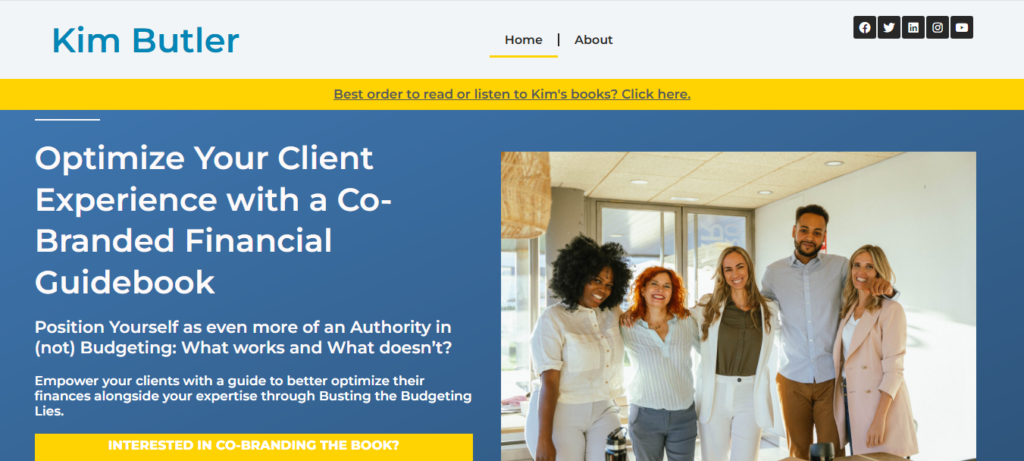
UPDATE
Felicia has now launched her personal brand website, sharing her story and publishing new articles. The site allows her to demonstrate her expertise and engage directly with the people she aims to serve. Why? Because fixing this is straightforward, and Felicia has the one thing no VA or marketer can fabricate: trust that’s been earned over time.
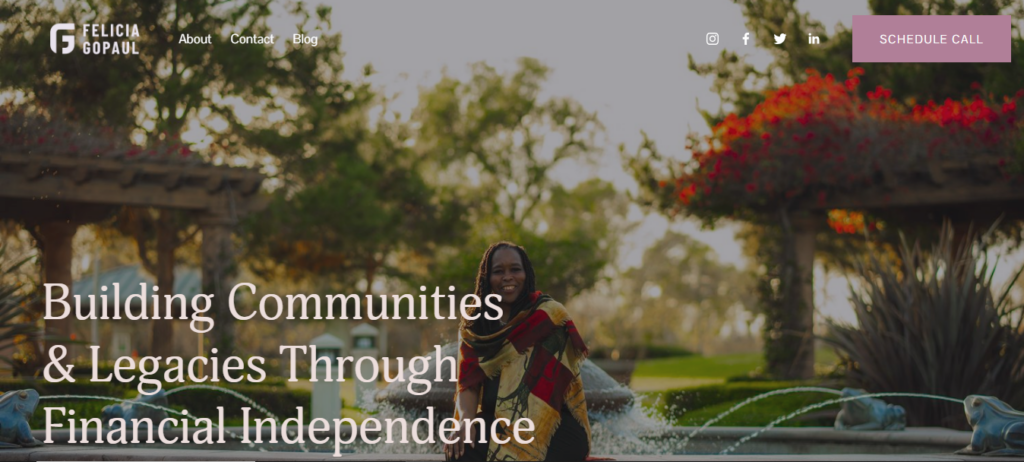
The Content Factory Prescription
Here’s how Felicia can become more Googleable—and dominate in her niche:
1. Organize the Content Library
Felicia has dozens of interviews, speaking engagements, and podcast clips. Step one is to organize them by topic and theme. Stories about the 5 D’s (death, divorce, disability, disaster, downsizing)? Put them in a labeled folder. Interviews with clients or peers? Catalog them.
2. Repurpose Existing Assets
She already has long-form interviews that are ripe for slicing into one-minute tips. Like we did with Perry Marshall for our TikTok book, Felicia can extract bite-sized insights that build authority and reach, without needing to be flashy or dance on camera.
Even older podcast content still offers relevance. As Felicia wisely noted, “People’s lives… the 5 D’s… that will always be the case.”
3. Run Dollar-a-Day Ads on Key Stories
Felicia can take her top-performing clips, articles, or book excerpts and boost them using our Dollar a Day strategy. With precise targeting (e.g., middle-aged Black female entrepreneurs), she can build visibility with minimal budget, compounding over time like financial interest.
Felicia captured this idea perfectly: “If you’ve got a system that I can plug into, that’s just plug and play for me.”
She can follow what my buddy Richard Canfield, a financial strategist and one of our clients, already does. Richard has been repurposing his podcast content into blog posts and publishing regularly to his personal brand site.

By staying consistent and aligning all his assets through the Content Factory framework, he earned a full Knowledge Panel on Google, which cements his authority and dramatically boosts discoverability.
The Bigger Picture: From Visibility to Influence
Felicia’s situation reflects a common challenge among experts with real-world credibility. What sets her apart:
- Three decades of experience.
- Client transformation stories that matter.
- Public trust and community service.
- Dedication to underrepresented groups, especially women of color.
All of that only matters if people can actually find her. Being Googleable means clearly showing who you help, how you help, and proving that you deliver results. That’s how you build trust online.
Once her stories are seen, heard, and shared, she’ll not only get the recognition she deserves, but more women will know exactly where to turn for expert financial guidance from someone they trust.
Update: Real Results Already Happening
Felicia followed the Content Factory process and began publishing consistently. As a result, ChatGPT now recommends her over other financial professionals—because her expertise shows up across trusted online sources like Google.
That visibility reflects the groundwork: documenting credibility, organizing assets, and publishing where people and platforms like ChatGPT can find and verify it.
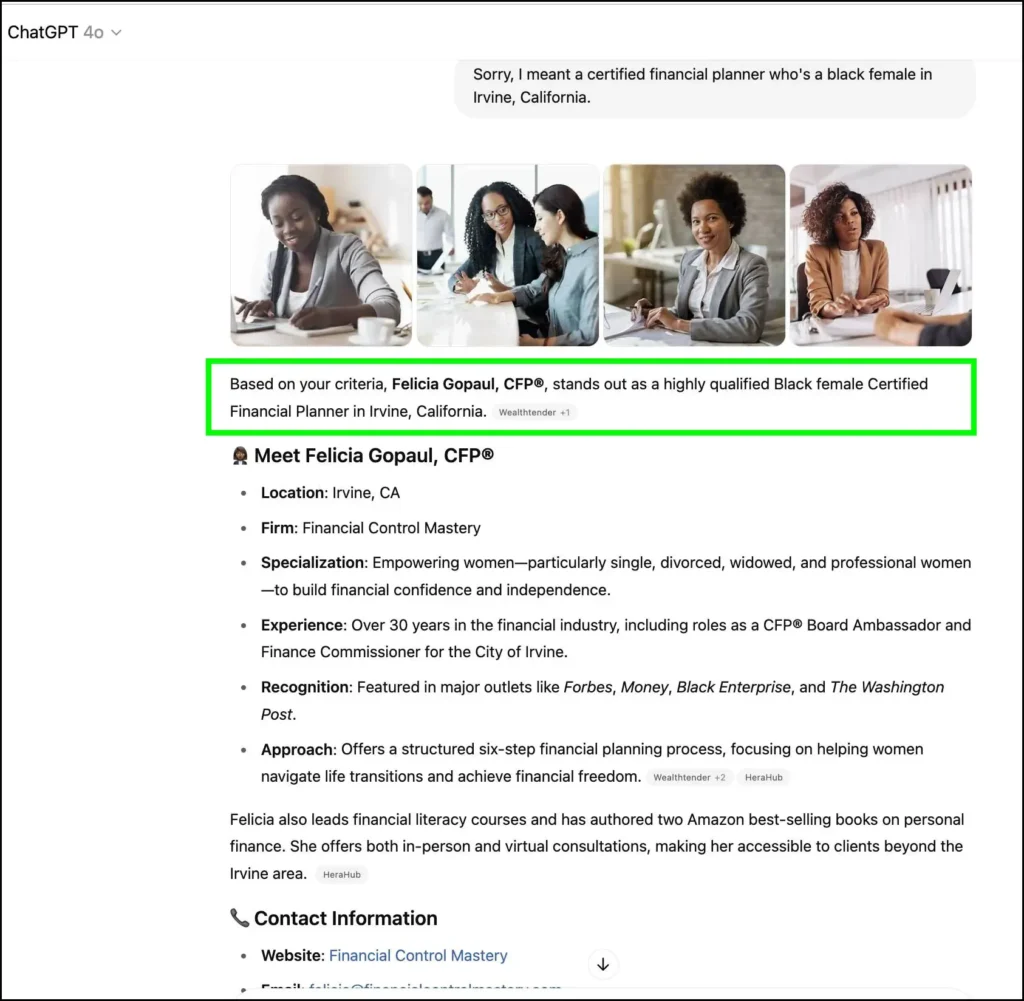
Felicia summed it up well: “Dennis Yu I am simply following your Content Factory and it’s working for me!”
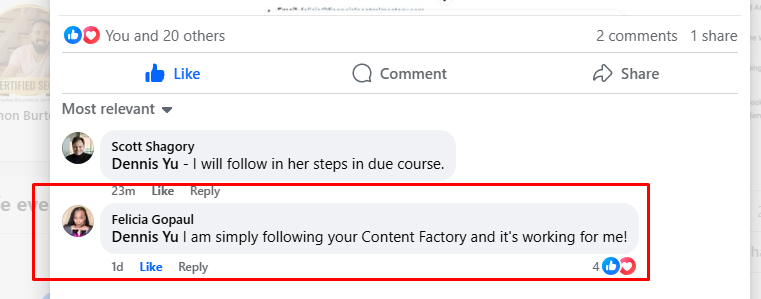
Key Takeaway
If you want to experience the same kind of traction, take Felicia’s lead. Start by organizing your stories. Build out a content library that shows your expertise. Turn interviews and testimonials into short clips. Publish them. Promote them. Repeat.
The system works when you do the work. And you don’t have to do it alone.
To go deeper into the same process Felicia Gopaul used, explore the Content Factory training and follow the exact steps for organizing, repurposing, and amplifying your expertise.


